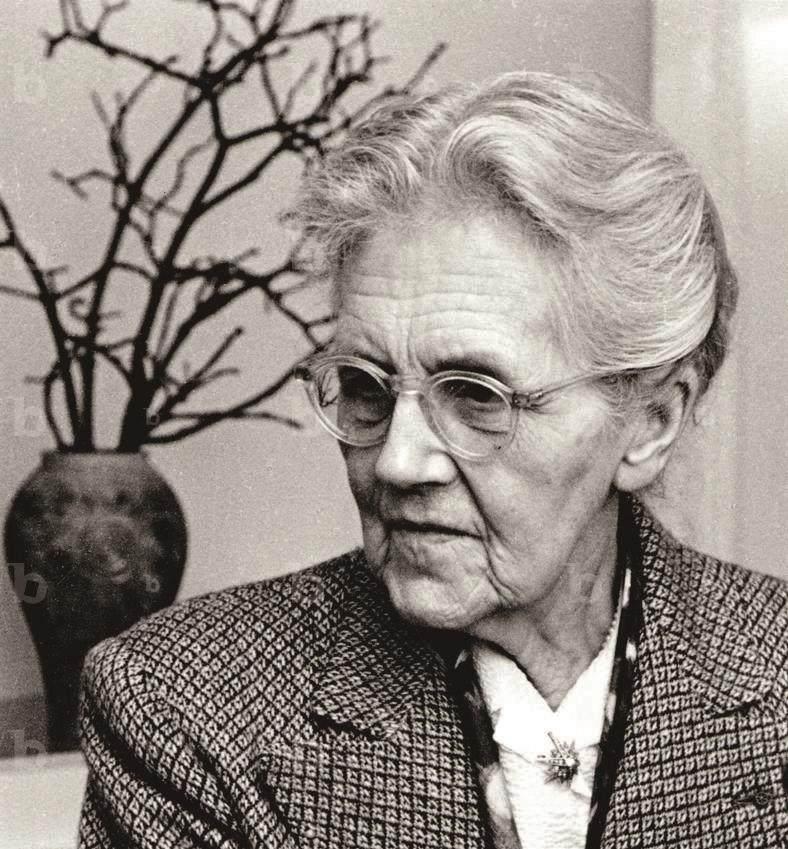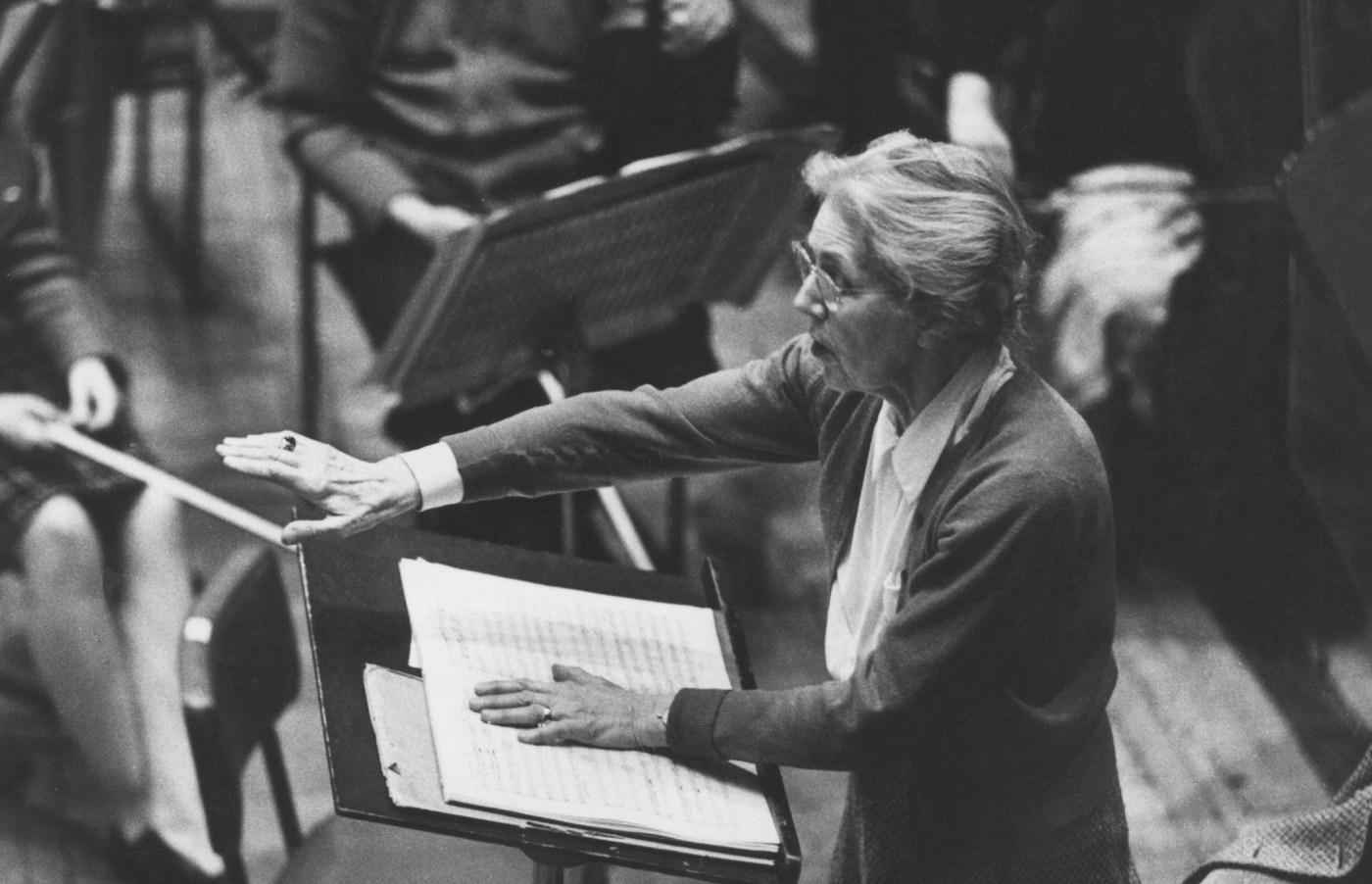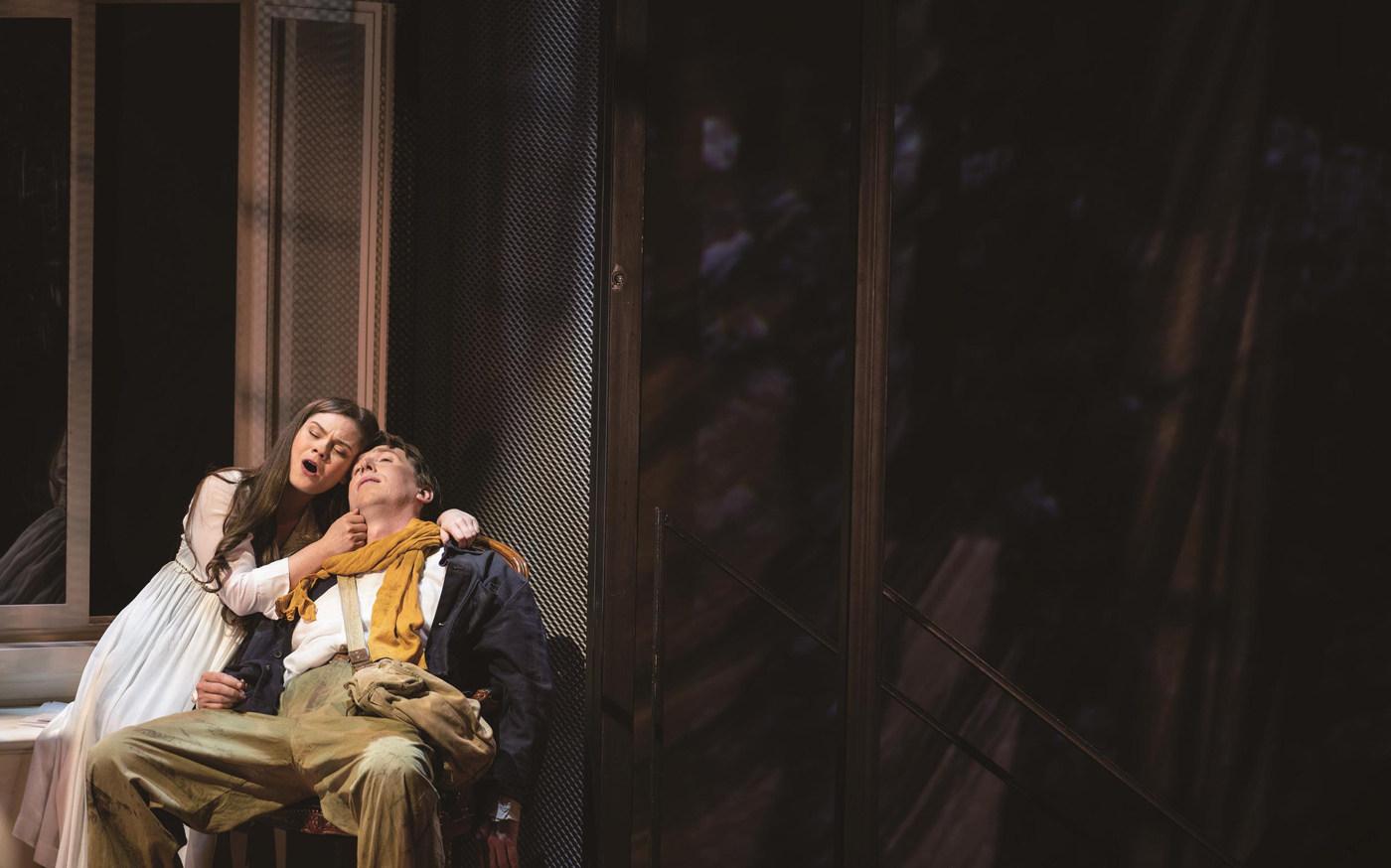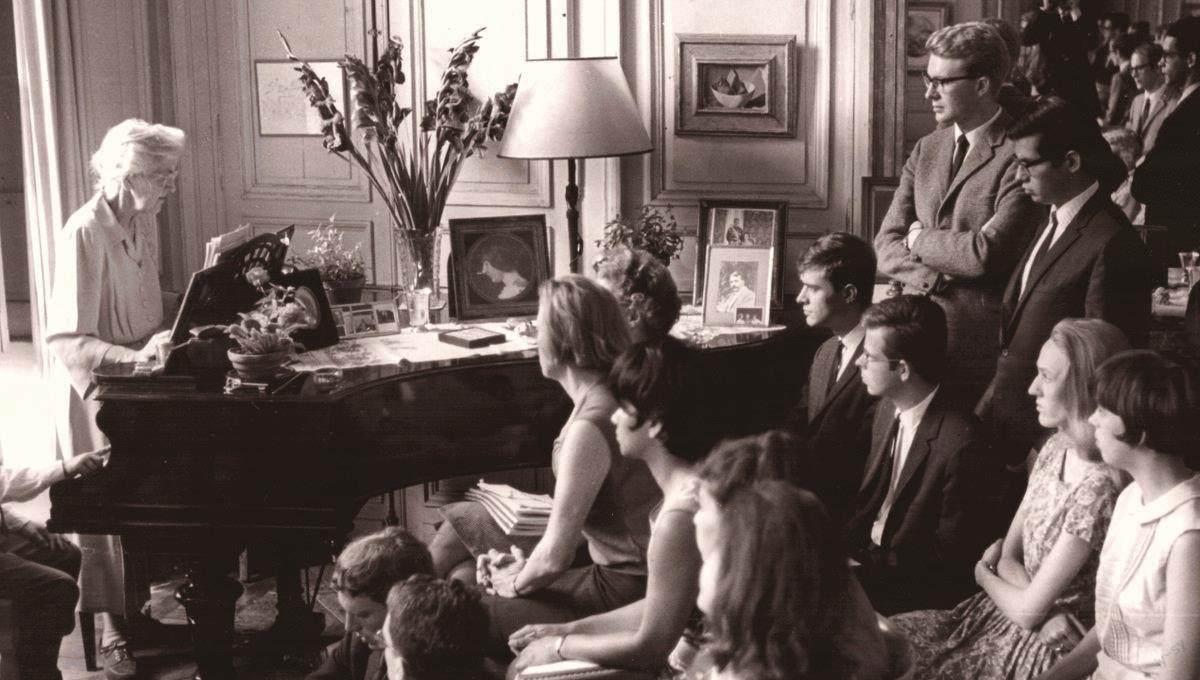万世师表:娜迪亚·布朗热唯一一部歌剧难得再次登上舞台
司马勤
你偶尔会在抽屉里发现一些东西。可能你未曾注意过它就在那里,也可能你知道它的存在,但以前从未真正在乎过它。众所周知,这样的发现也许会改变世界,虽然通常这种可能性微乎其微。问题是,因为个别幸运儿曾经从牡蛎中取出“蒙尘遗珠”,这种幸运驱使着其余的人满怀希望,坚持做着大浪淘沙的工作。

音乐传奇人物娜迪亚·布朗热(Nadia Boulanger,1887—1979)创作的唯一一部歌剧《死亡之城》(La ville morte),在很大程度上正是上文描述中的那只“装在沙盒里的牡蛎”。但一直以来,它的存在不算是什么秘密。大多数关于布朗热的传记中都突出地提到了这部作品,有些人甚至认为这出歌剧是她作曲生涯的巅峰。考虑到《死亡之城》在作曲家的有生之年从未上演过,能收获这种评价确实很了不起。她留下来的完成配器的总谱不到作品的百分之五十,完整的版本只存在于钢琴缩谱中。
《死亡之城》是布朗热与她的导师兼钢琴搭档斯特凡-拉乌尔·普格诺(Stéphane-Raoul Pugno)共同创作的,原定于1914年在巴黎喜歌剧院首演,但由于第一次世界大战的爆发而中断计划,并且再也没能执行下去。这首作品最终于2005年在意大利锡耶纳的奇吉亚纳音乐学院(Accademia Musicale Chigiana)进行了姗姗来迟的首演,该制作由作曲家毛罗·博尼法西奥(Mauro Bonifacio)完成配器,卢卡·普法夫(Luca Pfaff)执导。15年后,这部歌剧再次出现在瑞典哥德堡歌剧院,这一次是由安娜-玛丽亚·赫尔辛(Anna-Maria Helsing)执棒演出,是为国际妇女节策划的半舞台剧版本。
今年1月,《死亡之城》第三次有机会与观众见面。不同以往的是,这场在希腊国家歌剧院上演的制作,是希腊国家歌剧院与纽约新兴的歌剧团体之一弹射歌剧团(Catapult Opera)的联合制作。弹射歌剧团的创始人尼尔·戈伦(Neal Goren)将这部作品基本上归纳为新冠疫情期间的项目之一。由罗宾·瓜里诺(Robin Guarino)导演的这部室内歌剧也将于今年4月在纽约市上演。这个版本的配器编制(只用上11件乐器)由约瑟夫·史迪威(Joseph Stilwell)和斯特凡·克维克(Stefan Cwik)负责,他们的导师大卫·孔特(David Conte)正是布朗热生前的爱徒。我可以预见的是,纽约市的反响肯定会有所不同。毕竟在美国,娜迪亚·布朗热的名字仍然掷地有声。
***
我已经能够猜到有人会问:“那我们为什么要关注这个演出呢?”其实,与其说是关注这部作品,不如说是聚焦作曲家本身。布朗热到了晚年被尊称为“女先生”(Mademoiselle,英语中有法国女教师之意)——从某些方面来说,她的出现无疑改变了20世纪音乐的面貌。另一方面,布朗热也是第一位指挥波士顿交响乐团和纽约爱乐乐团以及伦敦爱乐乐团的女性。她对巴赫和蒙特威尔第的演绎开创了对早期音乐研究的全新方向,同时还激发了约翰·艾略特·加德纳(John Eliot Gardiner)和罗伯特·莱文(Robert Levin)等得意门生探索方向的灵感。

然而,布朗热对当代音乐的影响更大。以巴黎音乐学院为开端,1921年后在枫丹白露的美国学校(在那里她盛名远扬、享誉世界),她成为一名传奇性的教师,辅导过一系列作曲家,他们的成就令人惊叹。正如她的学生维吉尔·汤姆森(Virgil Thomson)曾经打趣的那样:“美国的每个小镇都有药店和娜迪亚·布朗热的学生。”
不过,这一说法还是谦虚了一点,汤姆森好像一反常态地克制了自己。布朗热的确教过许多美国人——仅在20世纪20年代就有近100人。除了汤姆森之外,来自大洋彼岸的其他学生,比如阿隆·科普兰(Aaron Copland)、伦纳德·伯恩斯坦(Leonard Bernstein)、罗伊·哈里斯(Roy Harris)、沃尔特·辟斯顿(Walter Piston)、大卫·戴蒙德(David Diamond),甚至是属于后辈的菲利普·格拉斯(Philip Glass)。然而,布朗热的影响力并不仅限于美国;学生们从波兰(格拉齐亚纳·巴切维奇,Grazyana Bacewicz)、俄罗斯(伊戈尔·马克维奇,Igor Markevitch)、阿根廷(阿斯托尔·皮亚佐拉,Astor Piazzolla)甚至是中国(丁善德),来到她的工作室求教。布朗热烘焙店出品的“小面包”(译者注:布朗热的姓氏Boulanger在法语中的意思是“面包”,所以作者把她的工作室戏称为“Boulangerie”,意为法语的“烘焙店”)也不仅限于古典音乐。她的学生名单中,格莱美奖得主、流行偶像昆西·琼斯(Quincy Jones)和伯特·巴卡拉克(Burt Bacharach)的名字也赫然在列。

美国作曲家内德·罗雷姆(Ned Rorem)曾在《纽约时报》(New York Times)上发问:“难道我是唯一一个曾外出留学却未曾师从娜迪亚·布朗热的、在世的作曲家吗?”不过,罗雷姆在文中继续提到了布朗热在非教学方面给予他的支持(包括经济资助、请他吃饭以及他的演出);罗雷姆还提到了一个相当敏感的事实:除了像科普兰或伯恩斯坦那样在音乐界留下不可磨灭的印记的大腕外,其他数十名布朗热学生的名字都消失在历史长河中,被湮没得无影无踪。
***
那么我们如何定义娜迪亚·布朗热先生自身呢?毫无疑问,她是天赋异禀的。她出生于一个音乐家庭,9岁时进入巴黎音乐学院,她的老师包括加布里埃尔·福雷(Gabriel Fauré)。她的目标是像她的父亲、作曲家欧内斯特·布朗热(Ernest Boulanger)一样赢得罗马大奖,但她从未获得过第二名以上的成绩。这一荣誉最终授予了她的妹妹莉莉(Lili Boulanger),她在1913年成为第一位赢得罗马大奖的女性。

那时,布朗热已经在与普格诺合作歌剧上花费了数年的时间,但1913年普格诺的英年早逝是该项目遭遇的第一个不幸。次年,欧洲战争的爆发几乎没有给音乐创作留下任何时间。到了1918年的春天,布朗热姐妹参加战时慈善工作,工作的压力也导致了莉莉的去世。不管出于什么原因——各种猜测皆而有之——姐姐基本上决定从音乐创作转向了音乐教育,而且在这条路上一去不复返。
这就又引出了几个相关的问题。首先,如果说布朗热的盛名远扬是听《死亡之城》这部歌剧的主要原因,那么她到底写了什么(这个基于总谱的问题早已浮出水面)?第二,她想要给我们展现的是什么?
第一个问题很难得到明确的答案。这部作品似乎包含了两种截然不同的声音:一种主要适应音乐,另一种则是适应戏剧。尽管此前有猜测说普格诺写的是男性角色,布朗热完成的是女性角色(这是她的先天性别优势),但我们可以确定的是,序曲完全是布朗热的创作,因为它是在普格诺死后完成的。
我们也不能言之凿凿,认为这部作品就是布朗热所构思的歌剧。戈伦决定创作一个小型配器版本——这是根据布朗热晚年的一名学生的建议——但他忽略了一个事实,即布朗热在年轻时曾为大型管弦乐队的四个场景中的两个场景配器。此外,为了让这部作品在他的可控范围内上演,戈伦完全取消了合唱段落——这对希腊来说是一个特别讽刺的决定,毕竟合唱的起源正是在希腊。
那么我们到底听到了什么?首先,我们难得瞥见20世纪早期的法国歌剧——今天我们主要是通过德彪西的《佩利亚斯与梅里桑德》(Pelléas et Mélisande)来了解那个时代,这部歌剧无论是在故事上还是在声音传达上都与《死亡之城》颇为相似。加布里埃尔·邓南遮(Gabriel DAnnunzio)的原创戏剧《死亡之城》(La città morte)可能是梅特林克的《佩莱亚斯》的象征主义表亲。但与德彪西的歌剧不同的是——这是对瓦格纳在当时影响力的一种反应——《死亡之城》揭示了一种更完整的综合性,一边洒上几点福雷的影子,另一边再洒上几点理查·施特劳斯的特点,为德彪西—瓦格纳主线增添了色彩。它充其量仍然是一部合格的舞台戏剧,但对当时相互冲突的音乐风格进行了巧妙的概括。

也许,对布朗热来说,这才是最终的问题。一些观察人士质疑,为什么布朗热从不贬低自己的创作,也经常捍卫自己的艺术技巧,却未曾积极推广自己的作品演出。但也许,因为多年来不断推动那么多年轻作曲家去征服新世界之后,她越来越不愿透露自己在旧时代的作品上投入了多少抱负与精力。
Every so often you find something in a drawer. You might not have known it was there, or maybe you did but never really cared before. Discoveries like this have been known to change the world, but they usually dont. The problem is, those few times when someone really does pull the proverbial pearl from the oyster drive the rest of us to sift through a lot of sand.
This pretty much describes the sandbox of an oyster that is La ville morte, the only opera written by the musical legend Nadia Boulanger (1887–1979). Its exis- tence was hardly a secret. Most biographical accounts of Boulanger prominently mention it; some even claim it as the high point of her compositional career, which is truly remarkable considering that the opera was never performed in her lifetime. A full orchestration existed for less than half of the piece, the complete version extant only in a piano reduction.


“Am I the only living expatriate composer who never studied with Nadia Boulanger,” Ned Rorem once asked in the New York Times. Rorem, though, went on to mention her non-pedagogical support (including money, meals, and a few performances of his music); he also mentioned a rather touchy truth: For every Copland or Bernstein who would make an indelible mark in the music world, dozens of other Boulanger students disappeared into history without a trace.
***
So where on that spectrum do we place Mademoiselle herself? She was without doubt prodigiously gifted. Born into a musical family, by age 9 she had entered the Paris Conservatory, where her teachers included Gabriel Fauré. Her goal was to win the Prix de Rome just like her father, the composer Ernest Boulanger, but she never got higher than second place. That honor would eventually go to her younger sister Lili, who became the first woman to win the Prix de Rome in 1913.
By that time, Boulanger had spent many years working on her opera with Pugno, whose untimely death in 1913 was the first of the projects misfortunes. The war in Europe the next year left little time for music, and by the spring of 1918 the stress of the Boulanger sisterswartime charity work would also result in Lilis death. For whatever reason—and speculations have covered much ground—the elder sister essentially turned to pedagogy and never looked back.

Which brings us back to a couple of pertinent questions. First, if Boulangers reputation is the main reason to listen to this opera, what exactly did she write (this question had already surfaced based on the score alone)? And second, what does she have to show us today?
The first question was hardly settled definitively. The piece did seem to have two distinct voices involved: one attuned primarily to the music, the other attuned to the drama. Despite earlier speculation that Pugno wrote the male roles and Boulanger the female roles(which would give her the advantage), all we can tell for sure is that the prelude was entirely her creation, as it was completed after Pugno had died.
Nor can we say with any authority that this production was the opera as Boulanger had conceived it. Gorens decision to create a small orchestration—based on advice from a Boulenger student at the end of her life—disregards the fact that in her youth she herself had orchestrated two of the four scenes for large orchestra. Also, to get the piece staged within his limitations, Goren removed the chorus entirely—a particular irony in Greece, where the idea of the chorus was invented.
So what do we actually hear? Well, for one thing, we get a rare glimpse of early 20th century French opera—an era we know today primarily through Debussys Pelléas et Mélisande, which in both story and sound world La ville morte rather resembles. (Gabriel DAnnunzios original drama La città morte could be a symbolist cousin to Maeterlincks Pelléas.) But where Debussys opera stands out as an anomaly—a reaction to Wagners influence at the time—La ville morte reveals a more complete synthesis, seasoning the Debussy-Wagner axis with sprinkles of Fauré on one side and Richard Strauss on the other. It remains at best a competent piece of drama, but a masterful overview of conflicting musical styles of its time.
And perhaps that, for Boulanger, was the ultimate problem. Several observers have questioned why Boulanger, while never disparaging her own composition—and often defending her own sense of craft—never actively promoted it. But perhaps after challenging so many younger composers in later eras to conquer new worlds, she grew increasingly reticent to reveal how much shed been personally invested in the old one.


